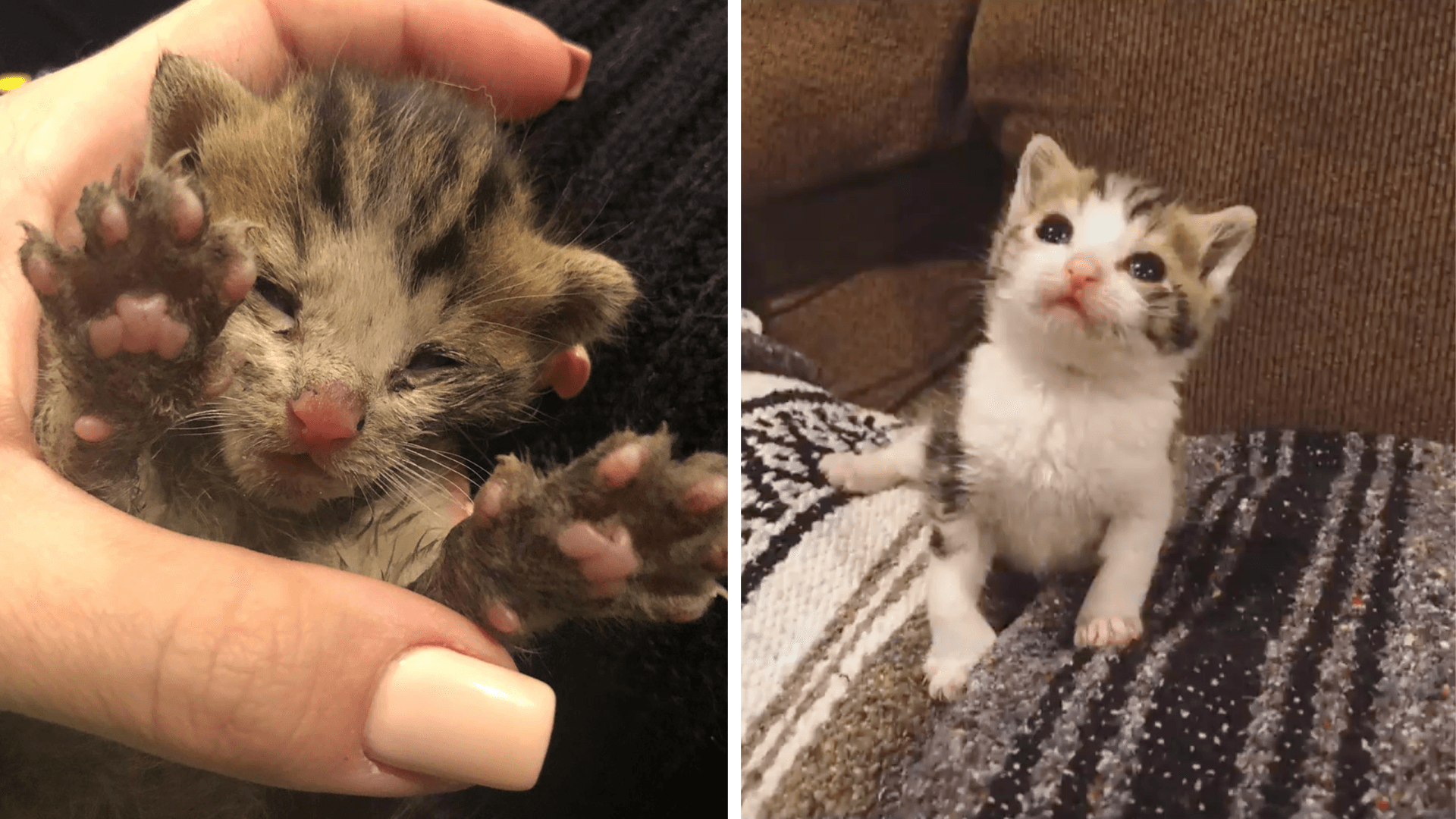When Rocky was first found, the odds of survival were painfully slim.
He was barely the size of a hand, gasping for air every 10 to 15 seconds, his body struggling just to stay alive.
His eyes hadn’t fully opened yet. His umbilical cord was still attached. By every visible measure, he was far too young to be on his own, let alone fight for his life.
But somehow, he did. And what followed was nothing short of a miracle.

Rocky was taken in by a compassionate woman who instantly knew that if he survived, she’d do everything in her power to give him the best life possible.
“When I got him, he was barely breathing,” she recalled. “I promised him, ‘If you make it, I promise you I will give you the best life ever.’”
At first, his signs of life were faint, barely-there meows and slow head movements, but each one was a spark of hope.
For days, she hovered over him, tending to his fragile body with unwavering dedication.
Feeding him was one of the hardest parts. Rocky was too weak to latch on and nurse properly, so she had to improvise.
She would squeeze out tiny droplets of formula into his mouth, carefully timing each drop so he wouldn’t choke.

“I would just squeeze a little,” she said, “he would suck and then stop.” It wasn’t textbook care. It was pure intuition and love.
Gradually, the tide began to turn. Rocky started showing interest in food. First came a sloppy mix of wet food and kitten formula.
It wasn’t elegant, “he would get it all over his face,” but every messy bite was a win. Every stain on his fur meant he was still fighting.
And fight he did.
As Rocky gained weight and energy, another issue surfaced.
Something wasn’t right with his back legs. While he could crawl with his front paws, his lower body dragged behind him like dead weight.
It looked as if he was mimicking a seal’s movement, unable to lift or push with his hind limbs.
A trip to the neurologist confirmed the worst: Rocky had no detectable feeling in his legs or tail.
But his caregiver wasn’t ready to give up.

“When the vet squeezed his legs, he’d try to look back at what was happening,” she explained.
That subtle reaction gave her hope. It meant that maybe, just maybe, there was still some connection, some potential.
So, she took a leap. She got Rocky his first wheelchair.
It was a tiny contraption, custom-made for his size. At first, he struggled to use it. The weight was new. The balance unfamiliar.
But slowly, his body adjusted. The wheelchair became not just a tool, but a symbol, proof that Rocky could learn to move on his own terms.
“He’s not used to using his legs all the time, so I don’t keep it on him for too long,” she said.

She let him rest when needed and race when ready. And race he did.
Today, Rocky tears through the house like any other kitten. He chases balls. He plays with toys. He gets into things he shouldn’t.
He is by all accounts a normal cat in spirit, even if his body still needs help catching up.
“He’s unbreakable, unstoppable. That’s totally him,” his caregiver beamed. “I mean, he’s a fighter like Rocky.”
The name suits him perfectly.
What started as a rescue mission for a dying kitten has turned into an inspiring journey of strength, patience, and belief.
Rocky isn’t just surviving. He’s growing. Exploring. Thriving.

His early struggles haven’t defined him. Instead, they’ve shaped him into a symbol of resilience.
And none of it would’ve been possible without the woman who saw something in him when others might have walked away.
Rocky’s journey isn’t over. There are still hurdles ahead. But with each tiny step, each burst of energy across the floor, he’s rewriting what’s possible for disabled or injured animals.
His story reminds us that life doesn’t have to look perfect to be worth living.
And that even the smallest, weakest creature can become a force of nature when love enters the picture.

